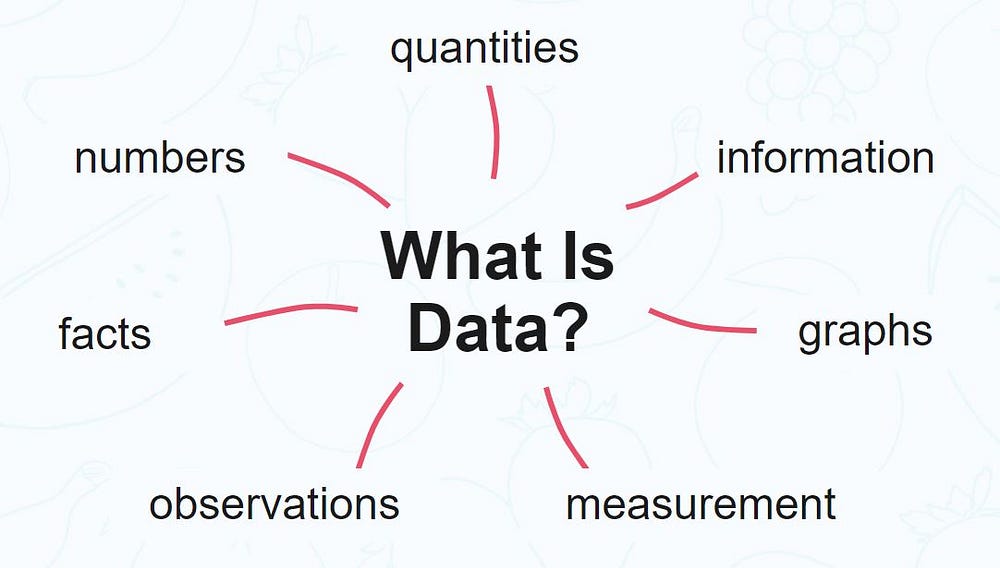Understanding Data and Big Data

Understanding Data and Big Data
Introduction
In today’s digital age, the terms “data” and “big data” are frequently mentioned, especially in the context of technology and business. But what exactly do these terms mean?
This blog aims to break down these concepts in a simple and detailed way to help you understand their significance and how they are used.
What is Data?

Data refers to information that is collected, stored, and used for various purposes. It can be anything that provides facts, figures, and details about an entity. Data comes in different forms and types:

1. Structured Data:
- This type of data is organized and formatted in a way that makes it easily searchable in databases. Examples include spreadsheets, SQL databases, and tables where data is arranged in rows and columns.
- Example: Employee records with fields for name, age, department, and salary.
2. Unstructured Data
- This data does not have a predefined structure or organization, making it more difficult to collect, process, and analyze. Examples include emails, social media posts, images, and videos.
- Example: A collection of photos from a company event or customer reviews on a website.
3. Semi-Structured Data:
- This type of data does not fit neatly into the structure of a database but contains tags or markers to separate elements. Examples include JSON and XML files.
- Example: An XML file that outlines product specifications for an online store.
What is Big Data?

Big Data refers to extremely large and complex datasets that are difficult to process and analyze using traditional data processing tools. Big data is characterized by the 5Vs:

1. Volume:
- The sheer amount of data is generated every second. For instance, social media platforms, sensors, and online transactions produce massive amounts of data.
- Example: Facebook generates 4 petabytes of data per day.
2. Velocity:
- The speed at which new data is generated and processed. In the age of the internet, data is being created at unprecedented rates.
- Example: The continuous stream of tweets, likes, and shares on social media.
3. Variety:
- The different types of data include structured, unstructured, and semi-structured data.
- Example: Text, images, videos, and sensor data from IoT devices.
4. Veracity:
- The quality and accuracy of the data. High veracity means the data is trustworthy and reliable. Low veracity means the data might be messy or misleading.
- Example: User-generated content that may include errors or misinformation.
5. Value:
- The usefulness of the data. Even with large amounts of data, if it doesn’t provide meaningful insights or benefits, it doesn’t have much value.
- Example: Analyzing customer data to improve marketing strategies and increase sales.
How is Big Data Processed?
Processing big data involves several steps:
1. Data Collection:
- Gathering data from various sources like social media, sensors, and transactional systems.
- Example: Collecting customer feedback from multiple online platforms.
2. Data Storage:
- Storing large volumes of data in databases and data warehouses designed to handle big data.
- Example: Using Hadoop or Amazon S3 to store data.
3. Data Analysis:
- Using advanced analytics tools and techniques to extract meaningful insights.
- Example: Applying machine learning algorithms to predict customer behavior.
4. Data Visualization:
- Presenting data in visual formats like charts and graphs to make insights more understandable.
- Example: Creating a dashboard to monitor key performance indicators (KPIs).
Key Takeaways
- Understanding Data Types: Data can be structured, unstructured, or semi-structured, and each type has its uses and challenges.
- Five Vs of Big Data: Big data is characterized by Volume, Velocity, Variety, Veracity, and Value, each adding complexity and significance to data management.
- Importance of Big Data: Big data enables better decision-making and strategic planning across various industries like business, healthcare, finance, and transportation.
- Processing Big Data: Effective big data processing involves collection, storage, analysis, and visualization to derive meaningful insights.





